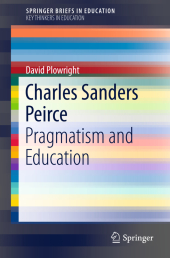 Neuerscheinungen 2015Stand: 2020-02-01 |
Schnellsuche
ISBN/Stichwort/Autor
|
Herderstra▀e 10
10625 Berlin
Tel.: 030 315 714 16
Fax 030 315 714 14
info@buchspektrum.de |

David Plowright
Charles Sanders Peirce
Pragmatism and Education
1st ed. 2016. 2015. xvii, 99 S. 9 Farbabb. 235 mm
Verlag/Jahr: SPRINGER NETHERLANDS; SPRINGER 2015
ISBN: 9401773556 (9401773556)
Neue ISBN: 978-9401773553 (9789401773553)
Preis und Lieferzeit: Bitte klicken
This book introduces a number of selected ideas from the work of Charles Sanders Peirce, the founder of pragmatism. Peirce, pronounced ┤purse┤, was born in America in 1839 and died in 1914. He published little in his own lifetime and he continually struggled to become recognised as a respected author with ideas that were highly creative, original and unique. The book begins with an examination of Peirce┤s life history. This is followed by an explanation of pragmatism, which states that an understanding of a concept can only be fully grasped by knowing what its practical effects are. The author then explains a number of Peirce┤s ideas that are based on his pragmatic maxim:
˙ scientific inquiry as a method of investigation and its relevance to everyday thinking
˙ inferential thinking based on abduction, deduction and induction and its use in educational research
˙ semiotics, the study of signs and its relevance to the development of conceptual understanding
˙ his profound and insightful ontological categories of Firstness, Secondness and Thirdness and their application to developing an understanding of the world around us
This introductory text is written in a clear and accessible style. Numerous examples are used throughout the book to illustrate Peirce┤s complex and sophisticated ideas
and to show how his thinking can be applied to education.
Acknowledgements.- About the author.- A note on referencing Peirce┤s writings.- 1 The Story of Charles Sanders Peirce.- 2 Introducing Pragmatism.- 3 Inquiry and Inferential Thinking.- 4 Inferential Logic and Inquiry.- 5 Semiotics: The Theory of Signs.- 6 Semiotics Continued.- 7 The Categories.- 8 Final Words.- References.- Index.


